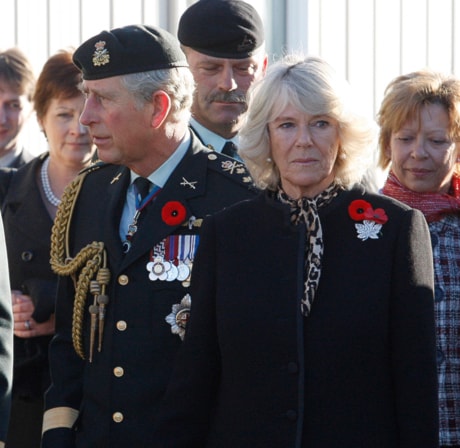OTTAWA — With a final royal wave from the Airbus door Thursday, Prince Charles and wife Camilla ended their 11-day Canadian tour, a visit which held a distinct military focus.
The emphasis may have been a sharp idea. A poll released just before the royal pair arrived suggested 41 per cent of Canadians would prefer that the prince hand off the throne to his son, William, rather than succeed the Queen. Only 31 per cent believed Charles should be king.
Another poll suggested a majority of Canadians want the monarchy to die with the Queen.
But Canadian support for the military seems unbounded these days and sharing in the reflected glow couldn’t hurt.
The itinerary had all the staples of a royal tour — small children with bouquets, community centres, schools, a hospital, churches and cultural centres — but the prince never lost an opportunity to speak of, and to, the Canadian Forces.
He went to Esquimalt, B.C., the biggest Canadian naval base on the Pacific. He presented new regimental colours to the Royal Regiment of Canada, the Toronto Scottish, and the Black Watch in Montreal. He also visited HMCS Haida in Hamilton.
He issued a moving statement about a Canadian soldier killed in Afghanistan just before his arrival.
The military focus was clearest when he donned the uniform of a Canadian lieutenant-general for the national Remembrance Day ceremony and then spent a few hours with soldiers, wounded warriors and their families at CFB Petawawa.
He seemed genuinely concerned as he talked to the wounded and took time to speak to families about the anxiety that comes when loved ones deploy to a war zone like Afghanistan.
It’s a feeling he must have known when his son Harry was stationed in Afghanistan for 10 weeks in 2006-07. the prince’s understanding of that emotion came through in a brief interview he gave at Petawawa.
“I do so understand what they must have been through, what they still go through,” he said.
He spoke of how much is owed to the soldiers.
“And thank goodness, if I may say so, that there’s such support from the Canadian public for what they’re doing, which is the great thing when you’re out there, feeling that you have all that support behind you.”
He also spoke about the grieving families, saying he felt inadequate when it comes to consolation.
“But the least we can do is to offer them our sympathy and understanding and support, and of course the fact that what their loved ones did will never be forgotten, always be remembered.”
The coast-to-coast trip was Charles’s 15th visit to Canada — he was last here in 2001 — but it was a first for Camilla, his second wife. However, the Duchess of Cornwall has a Canadian connection which came out with a visit to Dundurn Castle, a Hamilton, Ont., mansion and museum.
Her great-great-great grandfather, Sir Allan Napier, was the wealthy lawyer-banker who built Dundurn.
The royal tour opened in St. John’s, N.L. on Nov. 2. The couple visited the historic village of Cupids, believed to be the oldest English settlement in Canada. They went to a community centre, dropped in at Memorial University, and placed a wreath at the provincial war memorial.
It was then on to Toronto, to open the Royal Agricultural Winter Fair. There was a side trip to Dundurn Castle, a Niagara winery, and a couple of other brief stops before the tour headed west for British Columbia.
They toured the Olympic Village, a cancer hospital and Christ Church Cathedral for the dedication of a set of stained glass windows, before flying to Esquimalt to visit the navy.
After flying east again to Ottawa and meeting Gov. Gen. Michaelle Jean, the pair went to Montreal to visit the Cirque de Soleil and the Biodome.
The Societe St-Jean Baptiste Montreal chapter had said before the visit that the two would only be welcome if they came with a formal apology for what the group claimed was 400 years of cultural genocide against francophones in North America.
About 100 demonstrators, some waving Fleur-de-lis flags, gathered in downtown Montreal to protest the visit, forcing the royal couple to use a side entrance to visit a local regiment.
The next day was Remembrance Day, with the prince front and centre in uniform beside the Governor General.
Even at the Ottawa airport, with their military Airbus ready to roll, the prince paused several times while inspecting a royal guard to speak briefly with grinning soldiers.
And one of the last hands he shook at the foot of the boarding stairs was that of Gen. Walter Natynczyk, the chief of the defence staff.
